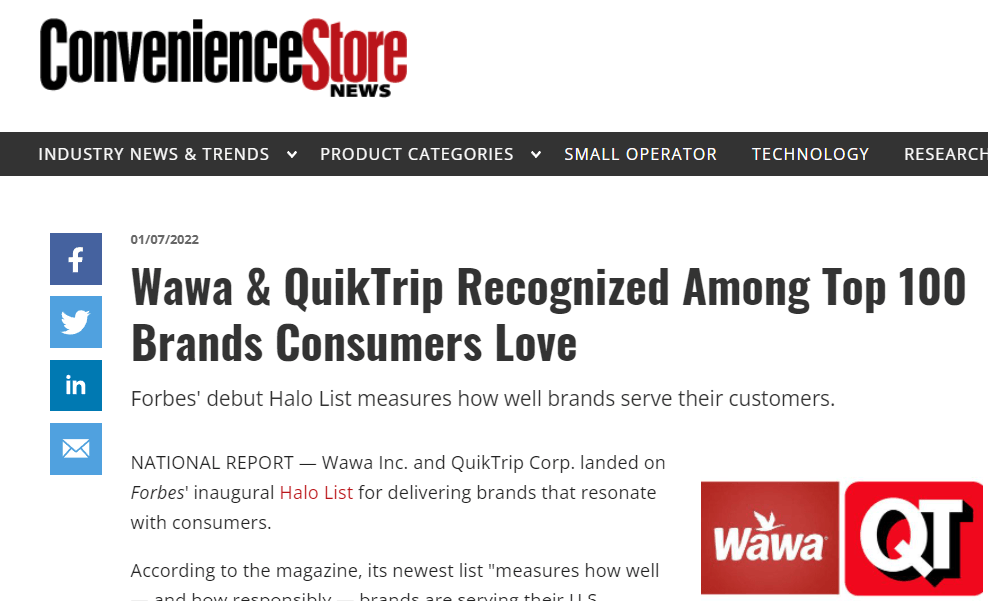WaWa and QuikTrip Top the Halo 100 List

This story appeared in Convenience Store News online, based on the Forbes Halo 100 powered by HundredX.
NATIONAL REPORT — Wawa Inc. and QuikTrip Corp. landed on Forbes' inaugural Halo List for delivering brands that resonate with consumers.
According to the magazine, its newest list "measures how well — and how responsibly — brands are serving their U.S. customers."
Pennsylvania-based Wawa took the No. 12 spot on the list. The retailer operates in c-stores in Pennsylvania, New Jersey, Delaware, Maryland, Virginia, Florida and Washington, D.C. The latest recognition for Wawa follows its appearance on Forbes' America's Largest Private Companies 2021 at No. 29.
In 2021 it also ranked among America's Best Employers By State in Florida, New Jersey, Pennsylvania and Virginia.
Tulsa-based QuikTrip captured the No. 36 spot on the Halo List. The retailer owns and operates 835 convenience stores and gasoline service stations throughout 11 states in the South, Midwest and Southwest.
In 2021, it appeared on the several of the magazine's lists: America's Largest Private Companies (No. 34), Best Employers for Veterans (No. 37), Best Employers for Diversity (No. 315), and America's Best Employers By State (Oklahoma).
Forbes partnered with Dallas-based HundredX to establish the Halo List. Consumers selected up to 75 brands that matter to them from more than 2,000 options and shared their opinions and experience with those brands. The list is the result of feedback from 110,000 customers on more than 2.8 million interactions with different brands over the past year.
Costco, In-N-Out Burger, Chick-fil-A, Publix Super Markets, and Trader Joe's made up the top five on the list.
To view the story on the Convenience Store News
Learn more about HundredX and our solutions by requesting a demo.
Strategy Made Smarter
HundredX works with a variety of companies and their investors to answer some of the most important strategy questions in business:
- Where are customers "migrating"?
- What are they saying they will use more of in the next 12 months?
- What are the key drivers of their purchase decisions and financial outcomes?
Current clients see immediate benefits across multiple areas including strategy, finance, operations, pricing, investing, and marketing.
Our insights enable business leaders to define and identify specific drivers and decisions enabling them to grow their market share.
Please contact our team to learn more about which businesses across 75 industries are best positioned with customers and the decisions you can make to grow your brand’s market share.



